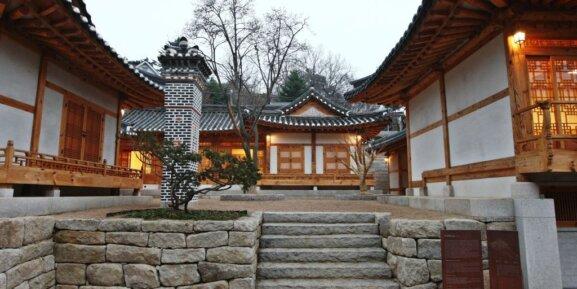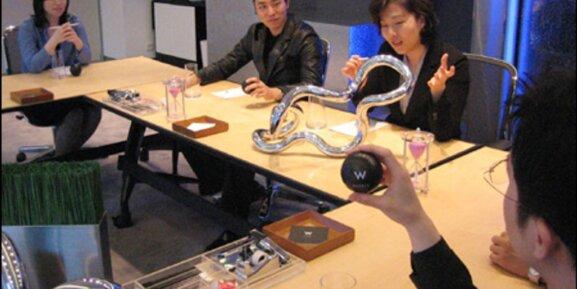How to spend your time in Cheonan
Cheonan is a city located in the northeast corner of South Chungcheong, a province of South Korea, and is 83 km south of the capital, Seoul. If you go by normal subway it will take roughly 2 hours but it is obviously the cheaper option. There is also the KTX The KTX from Seoul takes just 35-40 (depending on which train) minutes to zip to Cheonan-Asan Station (W12800), but you’ll need to connect to the painfully slow #20 or #13 bus (W1200 without a card) to get to central the Shingsegae/Bus Terminal area of Cheonan. Alternatively, you can walk about 200m to Asan Station, where for W1000 you can get a 5 minute subway (not underground) train ride into Cheonan Station. From here you can connect to both north lines going towards Suwon/Seoul or to the south lines heading to either Busan or Gwangju/Mokpo.
Alternatively, you can take a 급행 (express) subway directly to Seoul or Yongsan station in about an hour and a half. These trains run roughly once per hour. You can find the up-to-date timetables in the ticketing area of Cheonan station where you enter for the subway only lines.
Taejo Buddha:
A real find just outside Cheonan, which is about an hour south of Seoul on the KTX express train, the Taejo Buddha is one of the largest seated Buddhas in Asia. There is also a temple to explore here, and visiting it also features good exercises…it’s a steep uphill climb with stairs. Insiders tip: there is a public bus from Cheonan that ends here. Just check your guidebook or ask at at your hotel or hostel. I’d offer the bus number I took, but I’m told the bus numbers often change.
Stele of Bongseon Honggyeongsa:
The Bongseon Honggyeongsa Temple was built in 1021 during the reign of King Hyeonjong who built the temple in accordance with the wishes of his father King Anjong and because he was inspired by the Lotus Sutra. “Bongseon”, which means “In Reverence of Father’s Wishes”, was added to the name of the temple. The stele commemorates the construction of the temple which was set up in 1026 CE, five years after the temple was constructed. The stele is all that remains of the temple.
Korea History and Culture Park:
At the center of the park is a 33 meter high statue of the founder of Korea, Dangun, holding a globe. The statue is the largest of its kind in Korea.
At the entrance is a monument of Cheonbugyeong, a scripture of Daejonggyo, and at the Square of Liberalization History are statues built to remember the spirits of independent movement activists who sacrificed their lives for the nation, including Yu Gwan-Sun, Ahn Jung Geun, and Yun Bong-Gil. There are statutes of five internationally beloved religious and philosophical figures: Buddha, Confucius, Jesus, Socrates and Indian Saint. As a symbol of sacred love, there’s also a statue of the Mother Mary.
There is also facilities to provide visitors with a valuable experience of the nation’s history and culture: Korea History & Culture Center, Damul Exhibition Hall, Seondo Cultural Experience Field (including Ungnyeo cave, waterfall and a gazebo), the Jangseung totem pole, Sotdae Park, Sculpture Park, Traditional Seondo Folk Village, National archery place, and a stable for horseback riding. 
Gwangdeoksa Temple:
Gwangdeoksa Temple is said to be established in 637 by Monk Jajang Yulsa during the Silla Kingdom and was refurbished during the reign of King Heungdeok (832). The temple sits in the southeast of Mount Gwangdeoksan (elevation: 699.3m), which borders Asan-si and Cheonan-si, and the southwest of Mount Taehwasan (elevation: 455.5m). It was the biggest temple within Chungcheong and Gyeonggi Province before the Japanese invasion. However, it was burnt down during the Japanese invasion and the main buildings such as Daeungjeon, Myeongbujeon, and Cheonbuljeondeung were recently constructed. 
Gwangdeoksa Temple contains a three-story pagoda that is estimated to be the work of the early Goryeo Dynasty and Jonggak Tower, which is a unique octagonal pavilion. The quiet and peaceful ambience of the temple seems to perfectly capture the spirit of Zen meditation.
The National Mang-Hyang Cemetery:
The National Mang-Hyang Cemetery provides a resting place for the souls of Koreans who resided and passed away in foreign lands. The Korean government built the cemetery in 1976 for compatriots who were forced to leave their beloved homeland under the Japanese colonial rule and ultimately passed away in foreign lands. In addition to graveyards, the cemetery also houses the KAL Memorial Tower. Every fall, a large memorial service is held.
The Independence Hall of Korea:
The Independence Hall of Korea displays Korean historical documents and relics from the past to the present, focusing on the independence movements of the Japanese Colonial Period. Originally the interim Government Building of Korea in China, the building was brought over to Korea after the nation was liberated from Japanese colonial rule on August 15, 1945. The Independence Hall officially opened on the anniversary of Independence Day on August 15, 1987 and now boasts seven exhibition halls, the Circle Vision Theater, and other facilities commemorating Korea’s struggle for freedom.
All in all, Cheonan is a great little city to visit and live in. Well worth your time once things heat back up after Winter.


